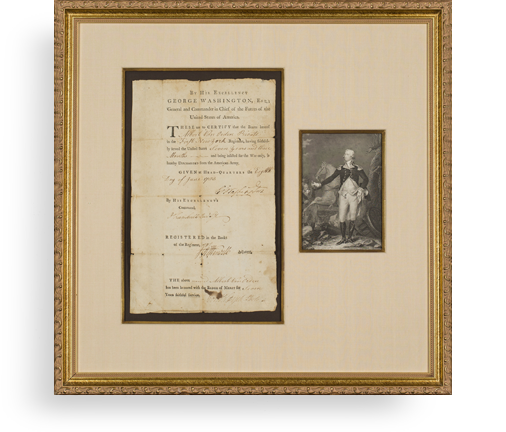The Age of Jackson Nears Its Conclusion, As President Andrew Jackson Calls the U.S. Senate into Session for the Inauguration of Martin Van Buren


A momentous document and an extraordinary rarity, as we can find no similar Jackson document having reached the market in decades.
The Age of Jackson, with its triumph of Jacksonian democracy, was nothing short of another American Revolution. It began during the 1824 presidential election, in which Andrew Jackson exerted enormous influence and won the popular vote (though losing in the House of Representatives to John Quincy Adams); it hindered Adams’s program, and...
The Age of Jackson, with its triumph of Jacksonian democracy, was nothing short of another American Revolution. It began during the 1824 presidential election, in which Andrew Jackson exerted enormous influence and won the popular vote (though losing in the House of Representatives to John Quincy Adams); it hindered Adams’s program, and then exploded upon Jackson’s assumption of the presidency in 1829; and it continued through his two terms until 1837. His protege Martin Van Buren tried to maintain it during his single term, but he was diverted and hampered by a great depression.
The hallmark of the Age of Jackson was that, led by the President, the "common man" demanded his place in politics, and obtained it. The voting franchise was extended very significantly, the public's participation in government increased, the office of the president and executive branch were strengthened and invigorated, and popular election of judges was instituted in many states. In addition, the Age of Jackson favored geographical expansion, as the frontier exerted its ever more powerful impact on the American scene. Hated by many, but loved by many more, Andrew Jackson embodied this new American character and dominated the age.
As Jackson’s biographer wrote of Jacksonian democracy and its long-term impact on the United States: “It stretches the concept of democracy about as far as it can go and still remain workable….As such it has inspired much of the dynamic and dramatic events of the nineteenth and twentieth centuries in American history – Populism, Progressivism, the New and Fair Deals, and the programs of the New Frontier and Great Society.”
Jackson did not run for reelection in 1836, selecting his ally and Vice President, Martin Van Buren, to receive the Democratic nomination in his place and succeed him. The opposition Whigs intentionally ran four different candidates in different regions of the country, hoping that each would be popular enough to defeat Van Buren in his respective area. The House of Representatives could then decide between the competing Whig candidates. This strategy failed: Van Buren won a majority of the electoral vote and became President.
By tradition, an outgoing president would call the United States Senate into session on the following Inauguration Day, to attend the festivities and be available for any Inauguration Day legislation the incoming chief executive might place before it. Letters were sent to the Senators with this call to session; just a handful of these, signed by presidents, have survived.
Manuscript document signed, Washington, December 20, 1836, calling the U.S. Senate into session for Van Buren’s inauguration on March 4, 1837. “By virtue of the power invested in me by the Constitution, I hereby convene the Senate of the United States, on the fourth day of March next, at ten o’clock in the forenoon, to receive any communication the President of the United States may think it his duty to make.”
There were 25 states in 1836. A search of public sale records going back 40 years fails to turn up any other inaugural call signed by Jackson having reached the market through that venue. We recall seeing one other through private sale, but that was decades ago.
Thus did Andrew Jackson himself ring down the curtain on his age and presidency, one that left a long-lasting legacy to posterity.

Frame, Display, Preserve
Each frame is custom constructed, using only proper museum archival materials. This includes:The finest frames, tailored to match the document you have chosen. These can period style, antiqued, gilded, wood, etc. Fabric mats, including silk and satin, as well as museum mat board with hand painted bevels. Attachment of the document to the matting to ensure its protection. This "hinging" is done according to archival standards. Protective "glass," or Tru Vue Optium Acrylic glazing, which is shatter resistant, 99% UV protective, and anti-reflective. You benefit from our decades of experience in designing and creating beautiful, compelling, and protective framed historical documents.
Learn more about our Framing Services








































































































